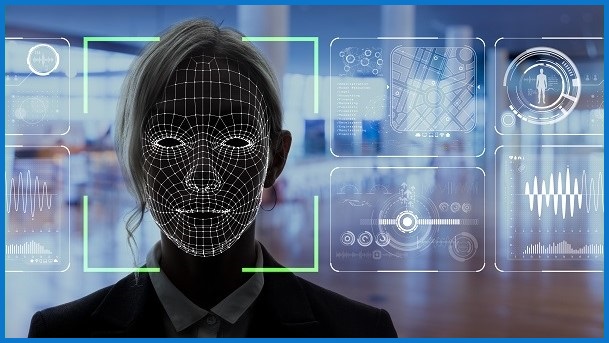As facial recognition technology is rolled out by governments around the world, citizens are beginning to fight back against what they see as the mass surveillance of their lives in a constantly connected world.
Only last month, a UK man filed legal action against the South Wales Police for violating his right to privacy.
In an opinion piece for the Guardian, Ed Bridges said his likeness was captured on two occasions in Cardiff – one of them being a peaceful protest.
He said the live biometric facial scanning produces data “as unique to me as my fingerprint or DNA.”
There is precedent for Bridges’s complaint in the European Court of Human Rights. The case of S and Marper v United Kingdom had two plaintiffs take the UK to court for retaining their fingerprints after criminal proceedings against them were discontinued.
The court found that the UK had been in breach of article 8 of the European Convention on Human Rights: the ‘Right to respect for private and family life’.
The court concluded that “the retention at issue constitutes a disproportionate interference with the applicants' right to respect for private life and cannot be regarded as necessary in a democratic society.”
Part of Ed Bridges’s concern is that the police began using these cameras seemingly without considering public objections.
“There has been no public consultation, no parliamentary debate, no warning that this invasive new surveillance tool is being rolled out,” he said.
“I was not suspected of a crime and was not on any criminal ‘watchlist’ – I was just one of thousands of people who happened to be walking in the view of the police’s facial recognition cameras that day.”
What about in Australia?
If you have travelled overseas in the past decade, you've probably already come across facial recognition technology being used in Australia.
The Australian Border Force has facial recognition technology in place at international airports – they are called Smart Gates, and in this context, the adoption of the technology is immediately relevant.
But the Commonwealth government has had difficulty getting a fully-fledged biometric identification system in place – though not for lack of trying.
In 2016, NEC Australia and CrimTrac signed the Biometric Identification Solution Contract which was to replace the National Automated Fingerprint Identification System and add a “facial recognition capability to enhance law enforcement’s biometric capabilities”.
The $52 million project was eventually terminated, much to NEC Australia’s disappointment.
The Japanese electronics retailer is a leader in providing surveillance technology. NEC has implemented facial recognition in the Universal Studios Tokyo and will be deploying it for the Tokyo 2020 Olympic Games.
You can now sign up for a free 30-day trial of NEC’s biometric authentication service which, when combined with a database of faces and live CCTV footage, has the apparent makings of a mass surveillance system.
The Commonwealth government has begun building the framework for such a system.
In 2017, the Council of Australian Governments signed intergovernmental agreement on identity matching services which included document verification, identity data, and face matching services in its purview.
This agreement was then to be implemented with the Identity-matching Services Bill 2018 that lapsed when federal parliament dissolved in April.
Home Affairs Minister Peter Dutton said the bill would help prevent identity fraud and aid law enforcement while improving national security and road safety.
“In addition to preventing identity crime, this service will make it easier for people to prove their identity when they are applying for government services,” Dutton said.
“Use of the Face Verification Service will commence with government agencies, but the bill also enables the service to be provided to private sector organisations – for example, banks or telecommunications providers – that have regulatory customer identification requirements.”
Legislation in the US
The City of San Francisco passed a bill last month to ban the use of facial recognition technology by police and other government agencies.
The Acquisition of Surveillance Technology ordinance limits the ability for the city to procure and access these technologies.
San Francisco joins a growing list of US cities and states limiting facial recognition with the state of Massachusetts having passed a bill to stop state agencies from using biometrics earlier this year.
In that instance, the court acknowledged “government use of face recognition poses unique and significant civil rights and civil liberties threats” to the state’s residents.
A co-sponsor of the bill, Bruce Tarr said he understood the potential value of surveillance technology but had his misgivings.
“Its use must be properly governed, and the information it generates must be properly secured, so that what is gathered to protect us can’t be used to harm us," Tarr said.
There has been a growing number reports about this technology being used to profile people with certain characteristics, like the Uyghur people in Xinjiang, China, or even to extend control over everyday citizens in what the ABC called ‘a digital dictatorship’.
As Shanghai-based reporter Paul Mozur told New York Times podcast The Daily, the Chinese state used the 2008 Beijing Olympics to showcase its technology.
“This was China’s coming out party as a new superpower,” said Mozur.
“They loaded up the city with 300,000 cameras that the government was controlling. Then when all these international leaders arrived to see the Olympics, they took them into the backrooms to see the cameras operating.
“They showed the screens and said, ‘this is how our policing system works.’”
According a Buzzfeed report last week, Chinese tech giants Hikvision and Huawei are already competing with IBM to supply the United Arab Emirates with facial recognition technology.










